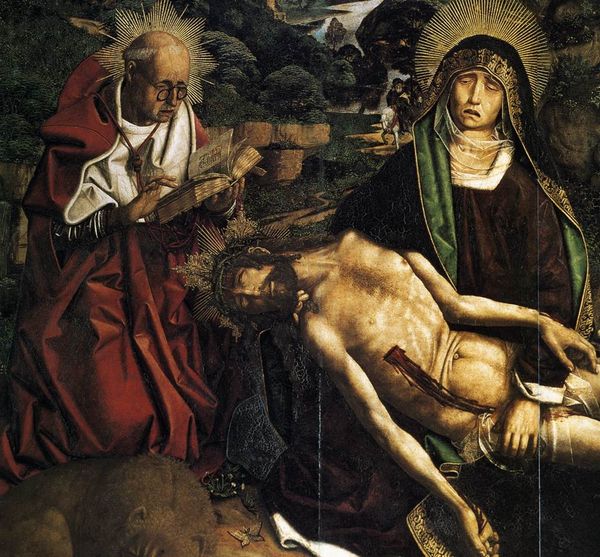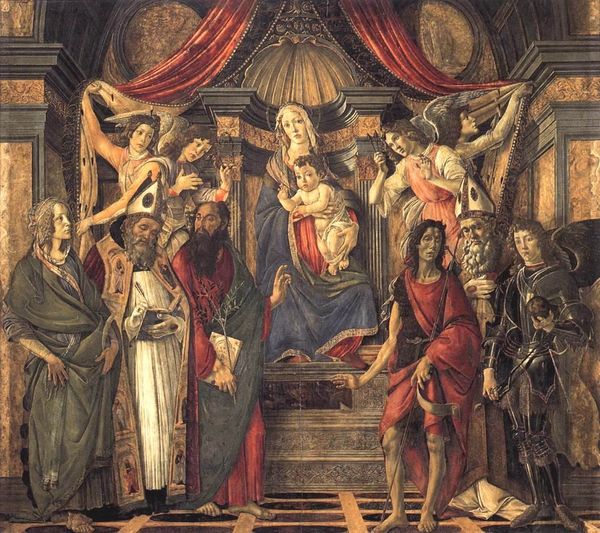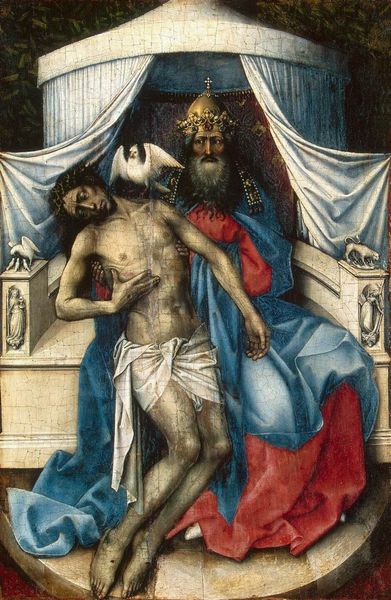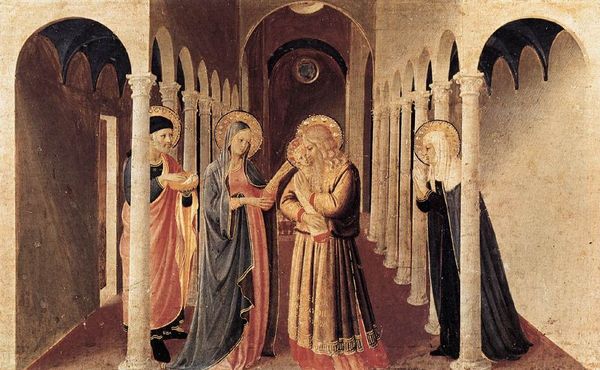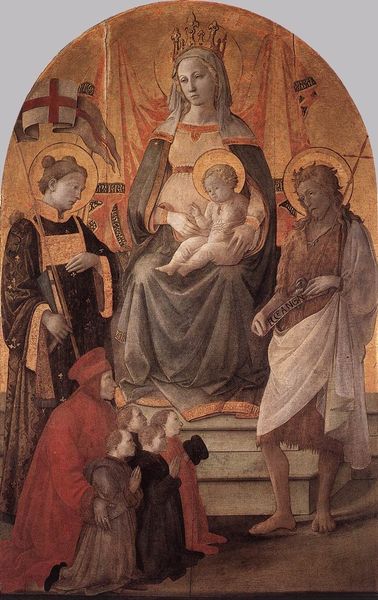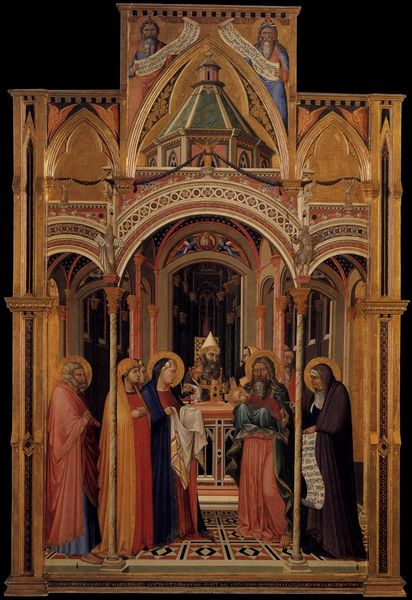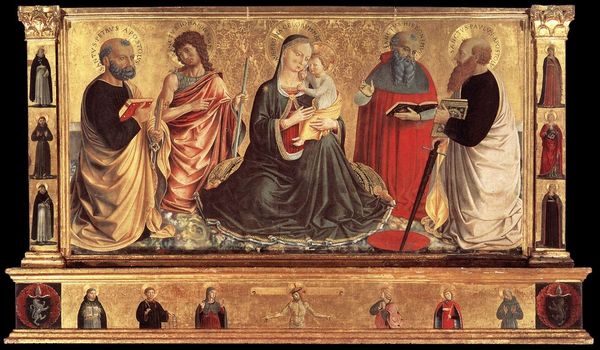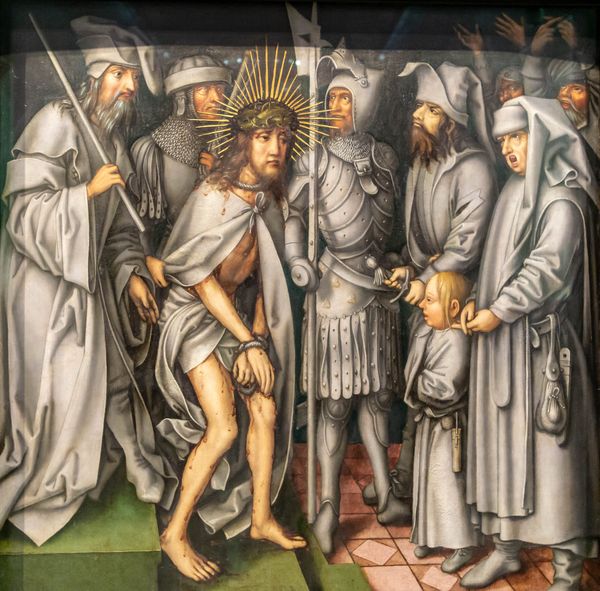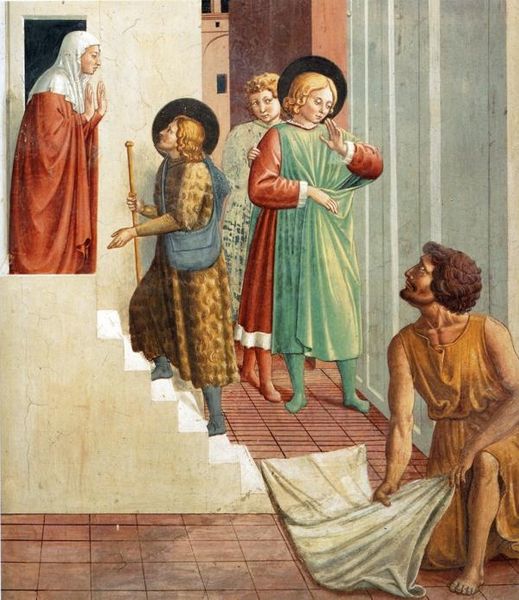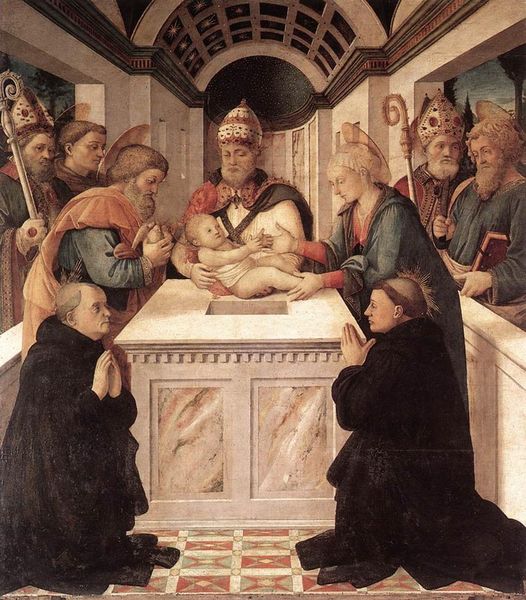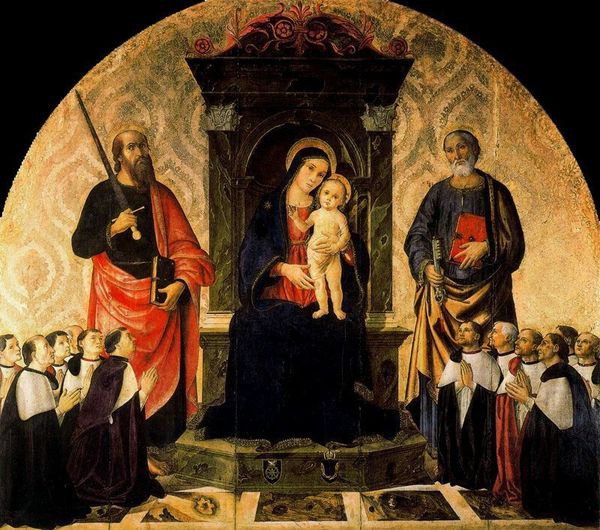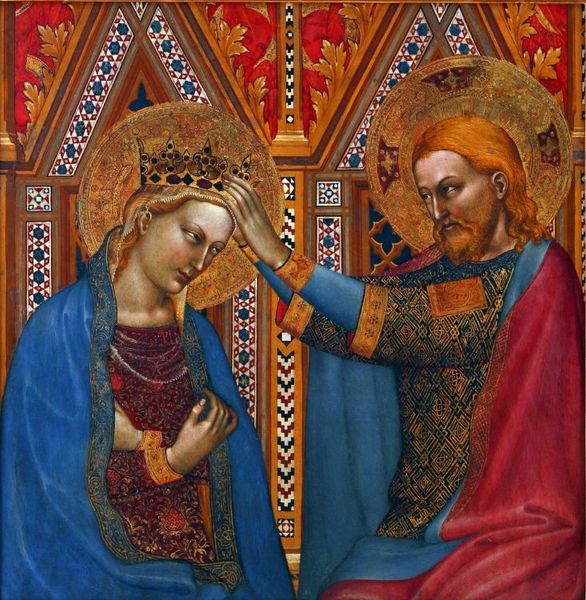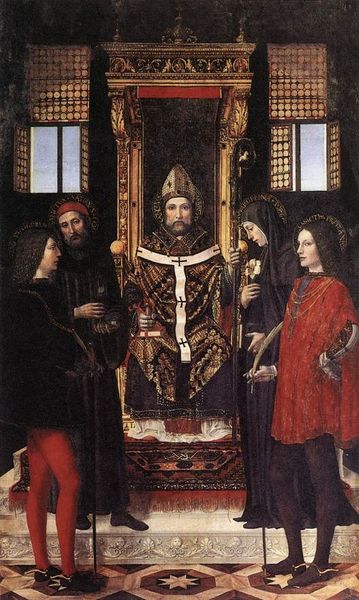
The Virgin and Child with Saints Francis and Sebastian 1491
0:00
0:00
painting, oil-paint
#
portrait
#
character portrait
#
painting
#
oil-paint
#
sculpture
#
holy-places
#
figuration
#
oil painting
#
christianity
#
genre-painting
#
history-painting
#
academic-art
#
italian-renaissance
#
early-renaissance
#
portrait art
#
virgin-mary
#
christ
Copyright: Public domain
Curator: Good morning. I’m excited to discuss Carlo Crivelli’s "The Virgin and Child with Saints Francis and Sebastian," painted in 1491. It’s currently held at the National Gallery in London. Editor: It has such a… theatrical intensity. Sebastian's pose with all those arrows is kind of metal, even now. And then, right next to him, we've got this poised Madonna, looking every bit the serene queen. Quite the contrast, really. Curator: Indeed. The composition reflects a very deliberate artistic and social agenda. The placement of these figures—the Madonna as a figure of solace between the contemplative Francis and the martyred Sebastian—speaks volumes about the religious sensibilities of the time. Consider, too, that Crivelli was working within the Venetian sphere of influence. Editor: So, Venice calling the shots? How does that play out here, beyond just style? Curator: Venice was more than a stylistic center; it was a political and economic force. The wealth and patronage influenced not only the artistic style—the elaborate detail, the ornamentation—but also the types of commissions artists received and how these artworks functioned within the city’s social and religious fabric. The presence of saints associated with healing, like Sebastian, in conjunction with the Virgin, often pointed to civic concerns, perhaps a prayer for deliverance from plague or conflict. Editor: Healing vibes—okay, I’m with you. It's funny, though; Saint Francis looks bummed, not exactly radiating hope! Still, there's something magnetic about Crivelli’s approach to texture; I keep wanting to reach out and touch it! Look at that fruit up top; are those real or ornamental? Curator: The fruits and garlands are trademarks of Crivelli's style, serving both decorative and symbolic purposes. These could represent divine favor, the bounty of God, or allusions to the Eucharist. Beyond symbolic gestures, he seems to relish the textures and weight of the physical world. Editor: Yes, but it's a world built for symbolic meaning, right? A gilded stage. This panel screams high-status commission, designed to send very particular signals about power, maybe faith as something untouchable, yet grounded in wealth. The Renaissance contradiction? Curator: Precisely. The tension between spirituality and earthly power defines much of the art from that period, reflecting the complexities of religious institutions and their roles in society. The meticulous detail of everything, from the Virgin’s crown to the wounds of Saint Sebastian, it invites both devotion and… well, maybe also a little fear? Editor: Okay, I get that. All the details come together for a total, unsettling sensory experience. A very "Renaissance influencer" moment, I might add. Thanks for bringing this one into focus. Curator: A pleasure. There’s so much to unravel in even one “simple” Renaissance panel, especially once you look at its wider historical, cultural circumstances.
Comments
No comments
Be the first to comment and join the conversation on the ultimate creative platform.
